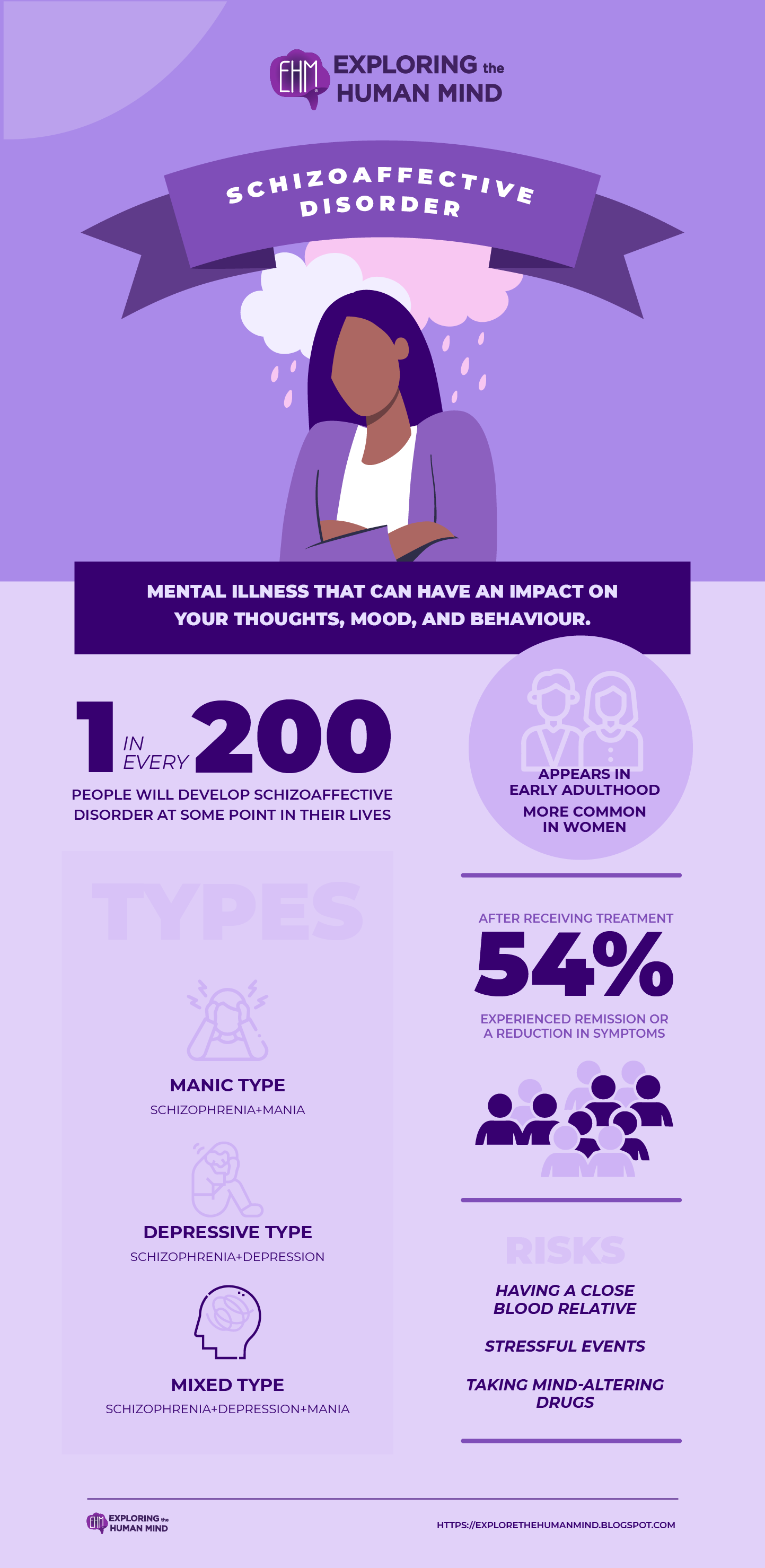Schizoaffective Disorder
One in every 200 people will develop schizoaffective disorder at some point in their lives. It usually appears in early adulthood and is more common in women than men.
The exact causes of schizoaffective disorder are unknown, but genetics are most likely a factor.
Types
Schizoaffective disorder is classified into three types:
- Manic type:This means you have symptoms of both schizophrenia and mania during your illness.
- Depressive type:This means you have schizophrenia and depression symptoms at the same time during your illness.
- Mixed type: This means you are experiencing symptoms of schizophrenia, depression, and mania during your illness.

vectors by Freepick; graphic design by Vadot
Risk factors
Among the risk factors for developing schizoaffective disorder are:
- Having a close blood relative —a person with schizoaffective disorder, schizophrenia, or bipolar disorder, such as a parent or sibling
- Stressful events that may trigger symptoms
- Taking mind-altering drugs, which may aggravate symptoms
You must have the following symptoms to be diagnosed with schizoaffective disorder:
- Periods of continuous illness
- Mania, major depression, or a combination of the two Symptoms of schizophrenia
- At least two periods of psychotic symptoms lasting two weeks each. One of the episodes must occur without the presence of depressive or manic symptoms.
Recovery rates for schizoaffective disorder are determined by the prognosis and treatments used. One significant study that examined treatment responses by those with schizoaffective disorder discovered that 54.5% of those who received treatment experienced remission or a reduction in symptoms. This same study discovered that 25.8% of patients were able to function at the level at which they were prior to developing schizoaffective disorder. Complete recovery rates were 22.7%. Finally, this study is encouraging because it demonstrates that recovery from schizoaffective disorder is both possible and realistic.
The condition cannot be avoided. However, if you are diagnosed and begin treatment as soon as possible, you may be able to avoid or reduce frequent relapses and hospitalizations, as well as reduce disruptions in your life, family, and friendships.
Reference:
What are the signs and symptoms of schizoaffective disorder? (2023). What Are the Signs and Symptoms of Schizoaffective Disorder? https://www.rethink.org/advice-and-information/about-mental-illness/learn-more-about-conditions/schizoaffective-disorder/#:~:text=Schizoaffective%20disorder%20is%20a%20mental%20illness%20that%20can%20affect%20your,some%20time%20during%20their%20life.
Schizoaffective disorder - Symptoms and causes. (2019). Mayo Clinic; https://www.mayoclinic.org/diseases-conditions/schizoaffective-disorder/symptoms-causes/syc-20354504 WebMD. (2003, February 9). Schizoaffective Disorder. WebMD. https://www.webmd.com/schizophrenia/mental-health-schizoaffective-disorder
Schizoaffective Disorder Statistics | Risk Factors and Treatments. (2022, May 26). The Recovery Village Drug and Alcohol Rehab. https://www.therecoveryvillage.com/mental-health/schizoaffective-disorder/schizoaffective-statistics/






Comments
Post a Comment